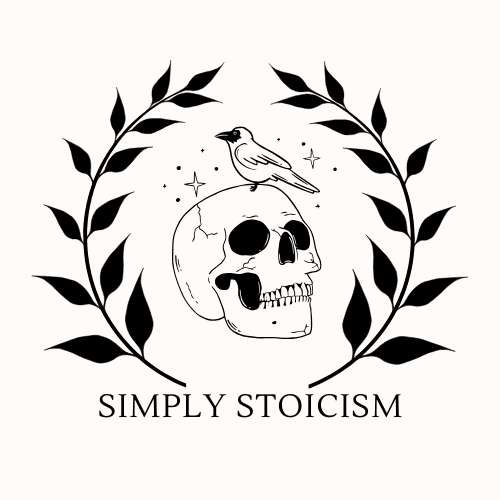The Modern Definition of Stoicism: Ancient Wisdom That Actually Works Today
Discover the modern definition of Stoicism and how this ancient philosophy can help you navigate today's challenges. A practical guide from a decade-long practitioner, minus the complex philosophy.

Jon High
·
Nov 27, 2024
Picture this: It's 2013, and a 19-year-old version of me is sitting in my dorm room, flipping through the private journal of a Roman Emperor who died nearly two millennia ago.
I know – not your typical college reading material.
But here's the thing: I wasn't looking for a life philosophy. I definitely wasn't searching for ancient wisdom. I was just a curious kid who stumbled across an interesting-looking book called "Meditations."
That random encounter changed everything.
In those pages, I didn't find dusty philosophy or complicated theories. Instead, I discovered something I didn't even know I needed: a practical guide for navigating life's chaos. Not through positive thinking or manifestation, but through time-tested principles that actually work.
Fast forward a decade, and these principles have helped me:
Navigate the high-pressure world of tech as a Senior Product Manager
Stay calm during critical incidents (turns out Marcus Aurelius's wisdom works great for server outages)
Make clear decisions when everything feels urgent
Build genuine resilience without becoming an emotionless robot
But here's what you really need to know: Stoicism isn't just another self-help trend or productivity hack. It's a practical framework for living well that's been battle-tested for over 2,000 years.
What Stoicism Actually Means (And Why You Should Care)
First, let's clear up a huge misconception: Being "stoic" doesn't mean being emotionless. That's like saying the only way to be fit is to live at the gym.
Real Stoicism is more like an operating system for your mind. Think of it as your internal framework for:
Making smart decisions when everything's on fire
Focusing on what you can actually control (and letting go of what you can't)
Finding peace without needing life to be perfect
Trust me, I've tried it all – meditation apps, productivity systems, even a brief phase with crystal healing (we all have our moments). But none of them gave me what I really needed: a practical way to deal with life's inevitable chaos.
Why Stoicism Hits Different
In my day job as a Senior PM, I deal with:
Uncontrollable issues and delays
Conflicting stakeholder demands
Endless ambiguity and pressure
The constant need to make high-stakes decisions
Sound familiar? Maybe your challenges look different, but I bet they feel similar – the pressure, the uncertainty, the need to keep it together when everything feels like it's falling apart.
Here's why Stoicism works so well: it wasn't created by philosophers sitting in ivory towers. It was developed by people dealing with real-world chaos:
Marcus Aurelius ran an empire during a pandemic
Seneca navigated brutal political drama that makes modern office politics look tame
Epictetus went from slave to renowned teacher
They created practical tools that work just as well for our modern challenges. Let me show you how.
The Three Core Principles That Actually Work
1. The Control Principle (Or: Stop Fighting Reality)
When I first started in tech, I tried to control everything – user behavior, team dynamics, project outcomes. Spoiler alert: it didn't work.
The Dichotomy of Control changed everything. It's simple:
In your control:
Your responses
Your actions
Your judgments
Not in your control:
Other people's opinions
External events
Final outcomes
This isn't about giving up. It's about stopping the exhausting fight with reality and focusing your energy where it actually makes a difference.
2. Aligned Action (Or: Stop Self-Sabotaging)
The ancient Stoic virtues aren't boring moral rules – they're practical tools for making better decisions:
Wisdom
Not the beard-stroking philosophical kind. This is about seeing reality clearly and making decisions based on what's actually true, not what you wish was true.
Example: When a project's going off the rails, wisdom means honestly assessing what's happening instead of hoping things will magically improve.
Justice
Do the right thing, even when it's hard. Even when others aren't. Even when no one's watching.
In tech, this might mean:
Giving credit where it's due
Admitting when you've made a mistake
Standing up for your team when it would be easier to stay quiet
Courage
Being afraid is normal. Courage is acting anyway. Sometimes the bravest thing is:
Having that difficult conversation with a stakeholder
Admitting you were wrong about a product decision
Speaking up about ethical concerns
Self-Control (Temperance)
This isn't about rigid rules – it's about conscious choice. It's that pause between trigger and response where your power lies. Trust me, this one skill would have saved me from sending about 1,000 regrettable Slack messages.
3. Reality Acceptance (Or: Stop Wishing Things Were Different)
This is where Amor Fati comes in – learning to accept (and maybe even appreciate) whatever happens.
When I first encountered this idea, I thought it was ridiculous. Accept that the launch failed? Accept that the feature got cut? Accept that the timeline got compressed?
But here's what I learned: Accepting reality doesn't mean you like it. It means you stop wasting energy wishing things were different and start focusing on what you can actually do about it.
How to Actually Practice This Stuff
Let me share what works for me:
Morning Preview (5 minutes)
Before opening Slack or checking email:
What challenges might I face today?
What's actually in my control?
How do I want to show up?
Throughout the Day
When things get intense (and they will):
Pause and breathe
Ask: "What's in my control here?"
Choose your response consciously
Evening Review (5 minutes)
Before ending your day:
What went well?
Where could I have done better?
What did I learn?
Common Obstacles (And How to Handle Them)
"I can't stop my anxious thoughts"
Neither can I! The goal isn't to eliminate thoughts but to change your relationship with them. Notice them, question them, but don't believe everything you think.
"I keep getting emotional"
Good! You're human. Stoicism isn't about suppressing emotions – it's about responding to them wisely. Feel fully, act wisely.
"I struggle with acceptance"
Start small. Practice accepting tiny annoyances before tackling life's bigger challenges. Remember: acceptance isn't approval; it's acknowledging reality so you can respond effectively.
What's Next?
Want to dive deeper? Here's your roadmap:
Start with our Stoic Starter Kit for essential daily practices
Try these 40 practical exercises for different situations
Learn the 9 core beliefs that make Stoicism work
Remember: You don't need to become a perfect Stoic sage. You just need to make slightly better choices, day by day. That's how real change happens.
Start small. Stay consistent. Trust the process.
What aspect of Stoicism resonates most with you? Share your thoughts in the comments below.
Want more practical Stoic wisdom? Check out my guide to 5 Morning Rituals to start building your daily practice.



